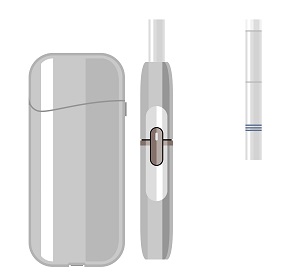Are Heated Tobacco Products a New Health Risk?
A new category of tobacco product, known as heated tobacco products (HTPs), is rapidly gaining traction around the globe. However, concerns over their health implications remain a hot topic of debate. Many smokers, such as Ben Taylor, an IT consultant and freelance writer, have turned to these devices as an alternative to traditional cigarettes.
Having been a smoker since the age of 13, Taylor experimented with various vaping options but found them lacking. His recent venture into using IQOS, a heated tobacco device developed by Philip Morris International (PMI), offered him a more satisfying experience. While Taylor admitted that IQOS does not fully mimic the experience of smoking a cigarette, he appreciated the genuine taste of tobacco without the persistent odor of smoke. He reported the disappearance of his chronic cough, attributing this change to his switch towards HTPs.
Global Growth of HTPs
Heated tobacco devices, like IQOS, have gained significant market share in over 60 countries, especially in countries like Italy and Japan, where they have been available since 2014. Experts predict continued growth in regions like the United States as these products gain popularity.
Despite the marketing claims of tobacco companies that HTPs are less harmful than traditional cigarettes, many health experts are skeptical. They warn that these products could create a new public health crisis, particularly for youth.
A Historical Perspective
The concept of heated tobacco is not new; it has been a point of interest for the tobacco industry for decades. The first product, Premier, launched by RJ Reynolds in 1988, failed within six months due to poor reception. However, advances in technology over the past ten years have facilitated a resurgence of HTPs, using methods such as heating tobacco encased in sticks or capsules.
Along with PMI’s IQOS, other notable brands include Ploom, from Japan Tobacco International (JTI), and glo, from British American Tobacco (BAT). These companies employ aggressive marketing strategies, including influencer promotions and sponsorships at events, to appeal to adult consumers.
Health Concerns and Regulatory Responses
While tobacco manufacturers claim to offer lower-risk alternatives that eliminate combustion, independent researchers raise pertinent questions about the long-term effects of HTPs. Some studies suggest that switching from traditional cigarettes can be beneficial for certain individuals, but independent analyses indicate that HTPs may still pose significant health risks.
Research Findings on HTPs:
| Study Focus | Findings |
|---|---|
| Epidemiological Research | Young non-smokers who try HTPs are more likely to transition to traditional smoking. |
| Chemicals in Emissions | HTPs emit toxic compounds, with some being higher than in traditional cigarette smoke. |
| Regulatory Body Statements | FDA cautions that no tobacco products are safe; marketing efforts are under scrutiny. |
The World Health Organization (WHO) has also voiced its concerns, linking the affordability of HTPs to the potential impediment of anti-smoking progress. Recent estimates indicate that youth marketing strategies may normalize tobacco consumption among non-smoking adolescents.
The Path Forward
As heated tobacco products, including IQOS, hit American markets—starting with Texas—health officials worry about increased tobacco use among younger demographics. Emerging products like nicotine pouches further complicate this scenario. Although some studies suggest that transitioning from cigarettes to HTPs could be advantageous, advocates warn that all tobacco products pose inherent risks.
Ultimately, while PMI and other major companies assert that their products help reduce overall harm, critics emphasize the need for comprehensive studies to assess the implications of HTPs on public health. Until then, the debate continues on whether heated tobacco represents a safer alternative or merely a new challenge in the quest for tobacco control.

